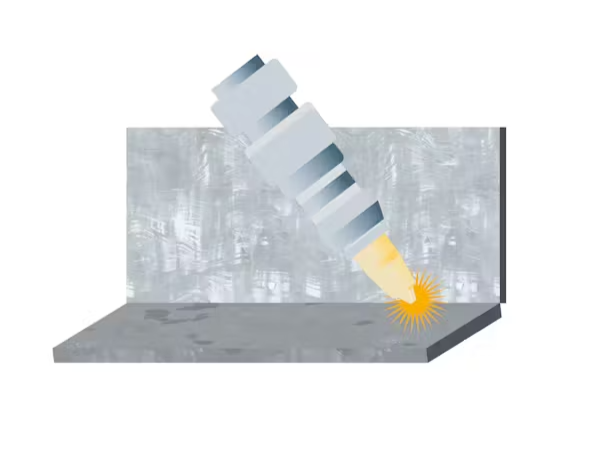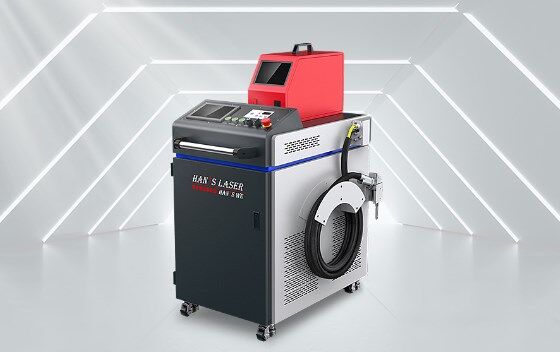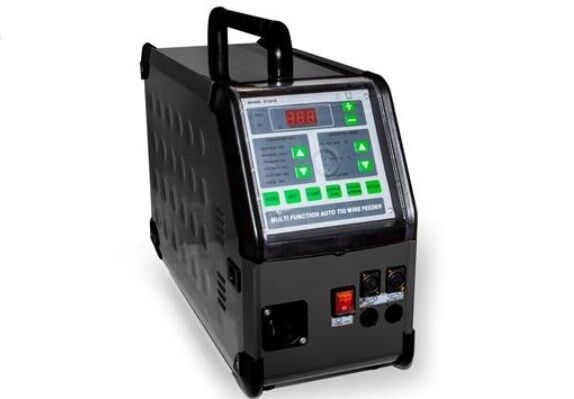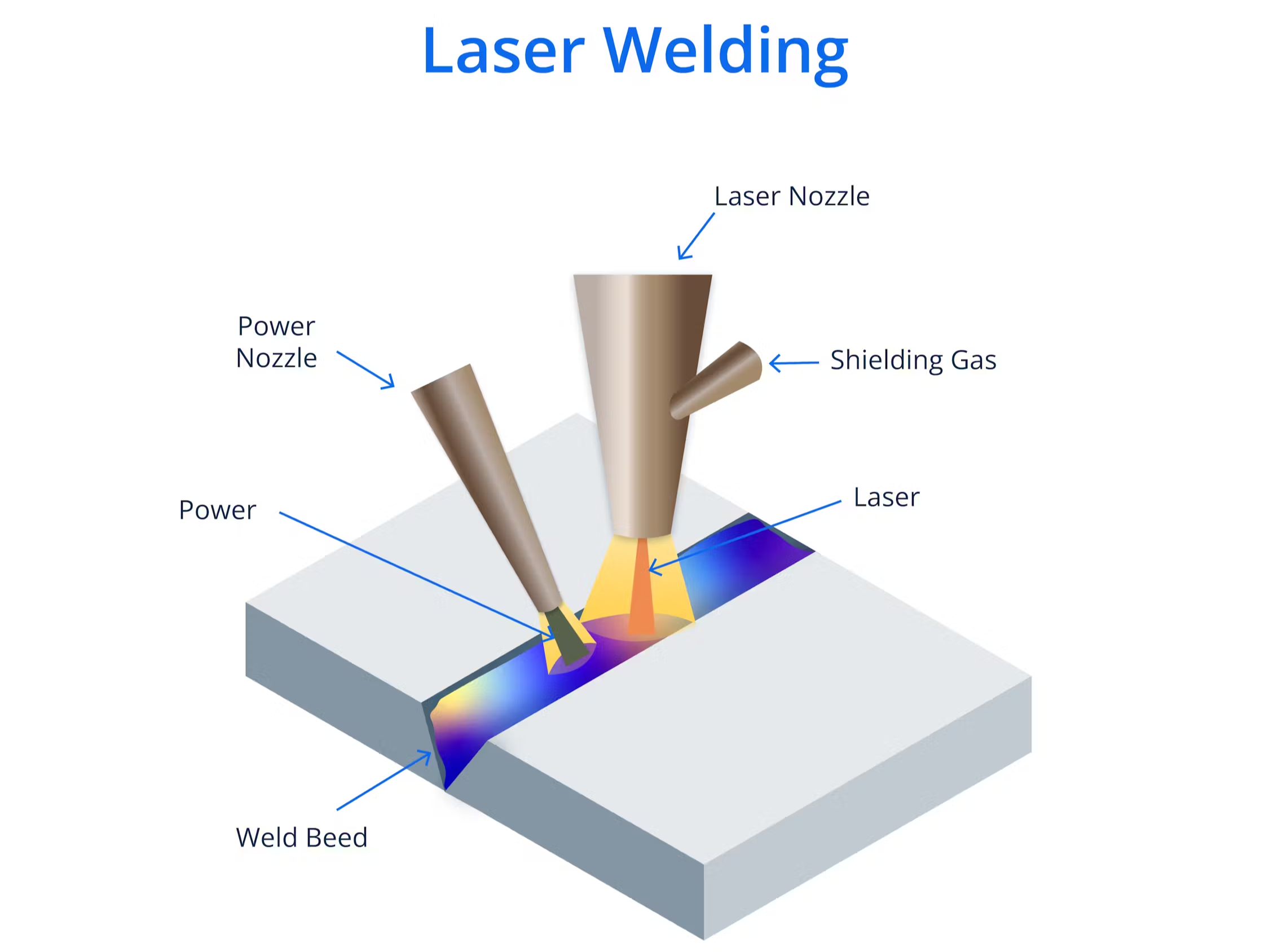Forget everything you thought you knew about welding. While traditional methods have their place, a revolutionary technique is rapidly reshaping the manufacturing landscape: laser welding.
Imagine welds so precise they're barely visible, strong enough for aerospace applications, and fast enough for high-volume production. This isn't science fiction; it's the reality of laser welding. From the intricate circuits in your smartphone to the critical components in a fighter jet, this cutting-edge process is driving innovation and efficiency across industries.
But what exactly is laser welding, and why is it becoming the go-to choice for manufacturers demanding unparalleled quality and speed? Let's dive in.
I. What is Laser Welding? Precision Meets Power.
At its core, laser welding uses a focused, high-intensity light beam to melt and fuse materials together. Think of it as a super-accurate, incredibly fast method to create strong, clean joints.

How it Works: A concentrated laser beam (generated by CO2, Fiber, or Nd: YAG lasers) hits the material, instantly heating it to its melting point. This creates a tiny, localized molten pool. As the laser moves, the molten material cools and solidifies, forming a precise, high-integrity weld.
Unmatched Accuracy: The standout feature of laser welding is its pinpoint precision. It allows you to weld tiny spots without affecting surrounding material, minimizing heat distortion and damage.
Speed & Consistency: Whether used with large stationary machines or integrated into automated systems, laser welding delivers consistent quality at high volumes, far exceeding the capabilities of many traditional methods.
Filler Optional: While a metal filler can be used for extra strength, it's often not necessary, simplifying the process for certain applications.
II. A Brief History: From Lab to Factory Floor
Laser welding isn't new; it emerged in the 1960s, hand-in-hand with the invention of the laser itself. Early experiments at Bell Telephone Laboratories quickly revealed its potential: incredibly narrow, detailed welds with minimal heat-affected zones and surprisingly, even the ability to join dissimilar materials. This early promise has since blossomed into a sophisticated and essential manufacturing tool.
III. Beyond Metals: What Can Laser Welding Join?
One of laser welding's most impressive capabilities is its versatility. It can effectively weld a wide range of materials, including:
Metals: Aluminum, copper, brass, steel, titanium, nickel – virtually all common industrial metals.
Plastics: Polycarbonate, nylon, ABS, and even carbon fiber-reinforced plastics.
Ceramics: Specifically alumina and zirconia.
Dissimilar Materials: A major advantage, allowing the fusion of materials with different thicknesses and properties – a feat often impossible with other welding techniques.
However, it's not a magic bullet: A material's physical properties (melting temperature, reflectivity, thermal conductivity) dictate its suitability. Highly reflective materials, for instance, require experienced operators and proper safety gear due to potential hazards.
IV. Pros & Cons: Is Laser Welding Right for Your Project?
1) Advantages:
Superior Accuracy & Precision: Ideal for intricate designs and delicate components.
Minimal Heat-Affected Zone (HAZ): Reduces material distortion and internal stresses.
High Strength Welds: Creates strong, clean joints with excellent aesthetic quality.
Fast Welding Speeds: Boosts production efficiency and throughput.
Versatility: Joins a wide range of materials, including dissimilar ones.
Automation Friendly: Easily integrated into robotic and automated manufacturing lines.
Non-Contact Process: Reduces wear on tools and prevents contamination.
2) Considerations:
Higher Equipment Cost: Initial investment can be higher than traditional welding machinery.
Surface Preparation Critical: Requires very clean, close-fitting parts with minimal gaps for optimal results.
Not for All Applications: Less suited for heavy-duty roles like shipbuilding or where large gaps exist.
Safety: Requires strict adherence to safety protocols (eye protection, burn prevention) due to the high-intensity laser.
V. Types of Laser Welding: Tailoring the Technique to Your Needs
The flexibility of laser welding comes from its various application types:
Conduction Welding: Low power, ideal for thin metals and fitted edges, fusing materials via capillary action without filler.
Deep Penetration Welding: High power, creates a deep, narrow weld by vaporizing material to form a "keyhole," suitable for thicker parts (often uses filler).
Laser Spot Welding: Perfect for small, localized welds, creating point joints or melting one part through another.
Laser Seam Welding: Creates long, continuous welds, often using a filler rod for a consistent fillet joint.
Hybrid Laser Welding: Combines laser welding with other processes (like MIG or TIG) to leverage the benefits of multiple techniques.
VI. Understanding the Lasers: The Power Behind the Process
Different laser types offer distinct advantages:
CO2 Lasers: Powerful, focus on extremely small points, good for most materials (though some reflective materials can be challenging).
Nd: YAG Lasers: Produce powerful infrared light, easily absorbed by stainless steel, aluminum, and titanium; known for ease of focus and low maintenance.
Fiber Lasers: Highly powerful and energy-efficient, with the beam delivered directly to the weld spot via fiber optic cable; excellent for automation and long-lasting.
Disk Lasers: Newer technology, liquid-cooled, offering high power, quick cooling, excellent beam quality, and easy maintenance.
VII. Top Laser Welders Picks for 2025
Laser welding technology has come a long way, and there are some impressive options available in 2025. Here are the top 5 industrial laser welders you should consider:
Hans’s Laser: A major player in the Chinese market, Hans’s Laser is committed to ergonomic design and accuracy ensuring reliable and durable welding operations.

IPG Photonics: A global leader in fiber laser technology, IPG Photonics provides high-performance laser welding machines widely used in the automotive and aerospace sectors. Its commitment to quality and performance sets a benchmark in the industry.

TRUMPF: Known for precision and reliability, TRUMPF’s advanced laser welding machines are highly regarded. The brand's emphasis on precision and flexibility resonates with industries seeking multifaceted welding solutions.
Megmeet LUX: Megmeet LUX series handheld laser welding machine (1.5KW/2KW/3KW) is a 2023 revelation, swiftly gaining popularity among customers right after its launch. It is a cutting-edge tool that exemplifies precision and efficiency in the welding industry.

Lincoln Electric: Lincoln Electric K2278-1 handy core is a reliable choice for welding, this machine is suitable for various applications.
Related article: Top 10 Handheld Laser Welding Machine Brands of 2023
VIII. The Laser Welding Process: A Step-by-Step Guide
While sophisticated, the basic steps are straightforward:

Preparation: Clean and precisely position parts, ensuring no gaps at the joint.
Fixturing: Secure parts with clamps or automated fixtures for stability.
Focus Adjustment: Set the beam's focal point precisely on the welding area.
Power Testing: Test the beam on scrap material to ensure optimal power for melting without excessive heating.
Welding: Aim the beam at the start, establish a good melt, and steadily traverse along the joint, using techniques like hot point rotation for optimal fusion.
Cooling: Allow the part to cool naturally, or use controlled quenching methods.
Conclusion
Remember, laser welding isn’t just about joining metals—it’s about shaping the future of precision engineering. Whether you’re a welder, engineer, or enthusiast, embrace the laser beam and let it guide your path toward excellence. If you're seeking precision, speed, and quality that traditional methods can't match, laser welding might be the solution you need.
Megmeet Welding Technology offers comprehensive manufacturing capabilities, including expert laser welding services. Whether you need parts welded or a complete fabrication solution, our team is ready to help you unlock the potential of this advanced technology.
Contact us today to discuss your project and discover how laser welding can elevate your manufacturing process! 🔗: https://www.megmeet-welding.com/en/contacts
Related articles:
1. Prices of All Types of Laser Welding Machines for Reference
2. Solutions to Oil Leakage in Pipeline Continuous Laser Welding
3. Robotic Laser Welding: The Future of High-Speed Manufacturing
4. Laser Welding: Precision Fusion for Modern Manufacturing
5. 5-Step Laser Welding Process: How Does It Work?








